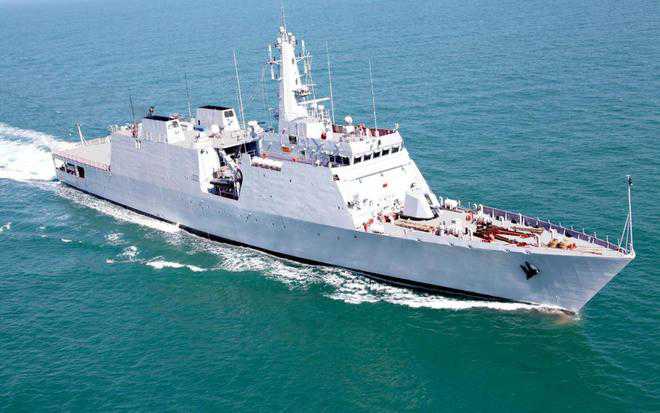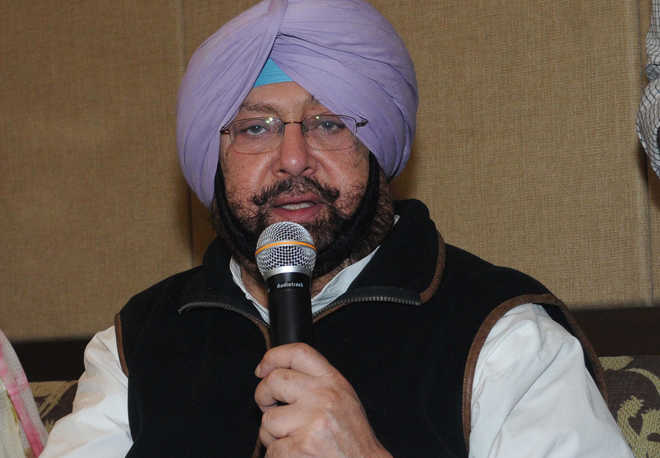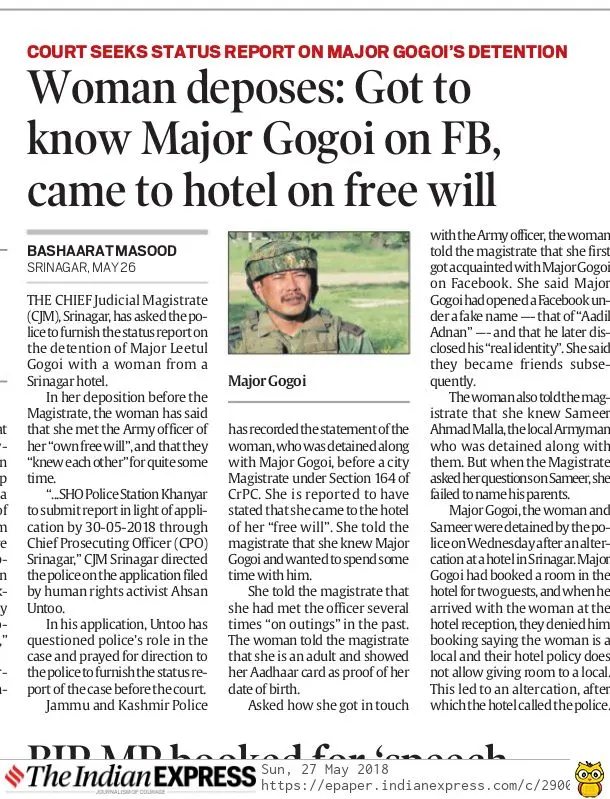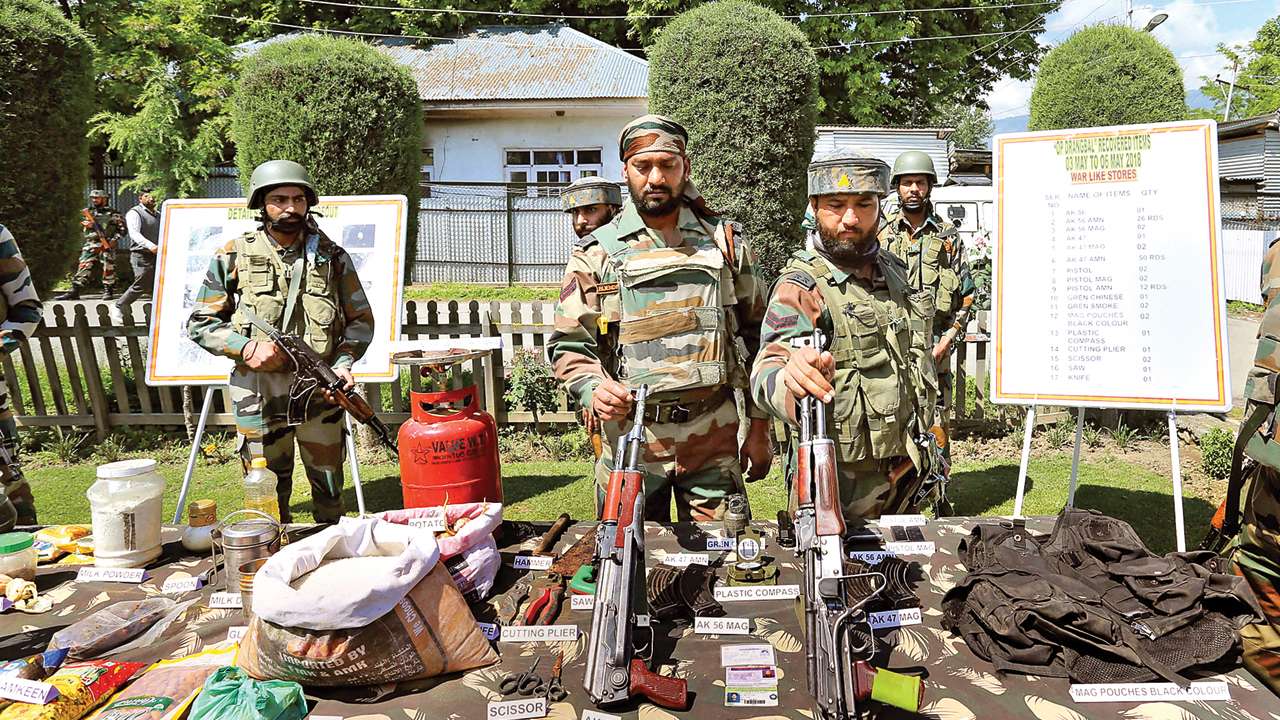In the midst of the Karnataka election drama at Bengaluru, there has come a very important and difficult decision by the central government; the temporary cessation of operations against terrorists in Jammu & Kashmir (J&K) for the period of Ramazan commencing 17 May 2018. It is at the instance of the state government of J&K after an all-party meeting endorsed Chief Minister Mehbooba Mufti’s initiative a week ago. Initial reports had indicated a refusal by the centre to the extent of the Defence Minister going on record to say that it was virtually unacceptable to the Army. The Army apparently was going by past records wherein the last time such cessation of operations took place in 2000-01 there was an increase in its casualty figures and the end result was the calling off of the cessation after inadequate response was received from terrorist ranks.
The government must have strong reasons to back the Chief Minister’s request and obviously this would have received the endorsement of the intelligence agencies, the interlocutor on J&K and probably the National Security Adviser’s office. However, the public perception on this has been negative for a couple of reasons which primarily emanate from the less informed circles. This perception needs correction.
First, none in the public and surprisingly very few from the Army itself seem to be aware of the nuances of the concept of cessation of operations. They seem to perceive a ceasefire like situation at the line of control(LoC) when the guns go silent from a given time. This essay will later dwell on the dynamics of cessation of operations.
Second, a perception prevails that the Army and other security forces had effectively bottled up the terrorists in Kashmir through offensive operations as part of Operation All Out. It was without doubt a very successful campaign that has led to the neutralisation of over 300 terrorists. As per perception, cessation of operations is going to upset the apple-cart and bring a halt to that momentum.
Is this a fair assessment? More is needed to be said on this. What is known is that the Army insisted that the concept would need to be on the lines that were adopted as part of the Non-Initiation of Combat Operations (NICO) of 2000-01. NICO was launched as a unilateral initiative during the tenure of Prime Minister Atal Bihari Vajpayee. Although it failed to extract anything substantial from the suspension of offensive operations, it gave the Army some experience in handling such a situation and provided immense clarity for the future.
It is that clarity with which the Army brass has approached the current initiative. The clarity essentially alludes to the fact that in a sub-conventional environment, cessation of operations does not mean a return to the barracks for the Army and other security forces. It is a far more sensitive time during which the Army gives peace-building a chance by ceasing to execute any offensive operations to target terrorists or over ground workers.
When the initiative was mooted by the all-party conference in J&K a week ago, it is unlikely that the members deliberated upon what exactly cessation of operations would involve. The Army clarified that in ample measure; that it would conduct just about everything except offensive operations such as cordon and search (CASO) and search and destroy (SADO) missions. That would mean that its counter-infiltration grid at the LoC would remain intact and active, all road securing operations will be conducted, various installations at Khundru and Khunmu, airfields and headquarters would be secured and the domination patrols would operate night and day, including night patrols and ambushes. That pretty much leaves very little. In effect, it translates into the meaning that, if for example there is information of unarmed terrorists in a location, the Army will not respond. The moment any presence of armed elements is reported there will be an immediate response.
Although the Lashkar-e-Taiba (LeT) has already negatively responded, in my perception the cessation of operations should anyway not include any foreign terrorists. The LeT’s ability to operate independently is any way suspect and in the course would probably suffer much more unlike 2000-01 when its numbers and operating infrastructure was much larger.
For those who perceive a let up in the stranglehold that the Army had established, it remains a fact that there will be some dilution in it. However, those in authority overseeing the larger strategy would in all probability look to make this up through matching psychological initiatives to project the national counter-narrative. The logic here is simple. Military operations may continue forever due to the terrorist capability to maintain their strength and enhance it through local recruitment. However, with military space reasonably well dominated, it is the social space which needs to be addressed. That cannot seriously be undertaken in the face of triggers for social unrest provided by everyday operations. Social unrest here alludes to the frequent stone-throwing, Friday prayer demonstrations, and flash mob interference in ongoing anti-terror operations.
To sum it up, the prevailing rationale for the centre to approve cessation of operations appears to be the following.
1. First, domination achieved through Operation All Out must go beyond military achievement and translate into strategic advantage.
2. Second, the military space is secured but the social space is in turbulence. This social space needs to be calmed and addressed for which daily triggers from military operations need to be avoided.
3. Third, military operations can continue interminably without peace in sight as the focus of ensuring numerical strength of terrorists has shifted from infiltration to local recruitment. More than the number neutralised is being locally recruited. This needs to be addressed through larger engagement with youth.
4. Fourth, for all the criticism of the centre’s ‘robust only’ policy, an opportunity has now been created to spell out counter-narratives to neutralise the dominant separatist narrative that Azadi is attainable.
5. Fifth, with Pakistan under severe pressure from the Financial Action Task Force (FATF) perhaps this could be an extendable window during which balancing our approach may fetch better response without commensurate negative Pakistani response.
6. Sixth, the timing appears symbolically most suitable in sync with Ramazan although the inclusion of Sri Amarnath Yatra period even at the outset should have been considered. Chief Minister Mehbooba Mufti has stated that it will be one step at a time and could extend to the period of the Amarnath Yatra if the response from the anti-national elements is positive.
The centre’s strategy has a reasonable rationale which cannot be completely faulted but success or failure like 2000-01 is contingent upon response. The anti-national elements may not wish to give the centre and state the advantage of a stable environment to work on psychological initiatives which have been characteristically missing. Yet, by adopting this strategy, the governments have definitely achieved a higher moral ground to work from. On the face of it, we still await the initial response from those who are lined up against the nation. All eyes would be on the visit of Prime Minister Narendra Modi to Kashmir on 19 May 2018 and how he exploits this opportunity which could be considered an extension of his doctrine – Na Goli Se, Na Gali Se, Kashmir Jeetenge Gale Lagaane Se.







































































